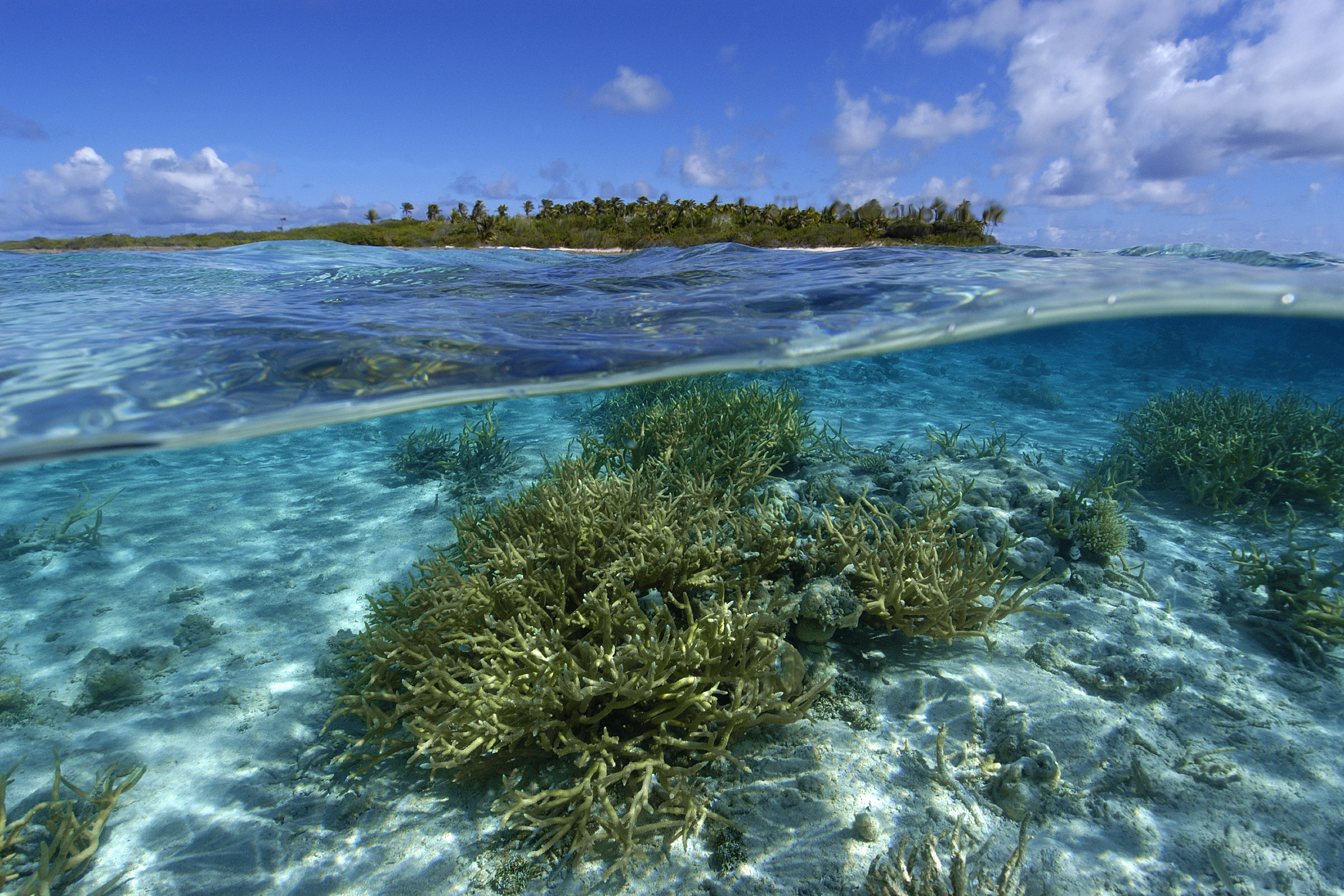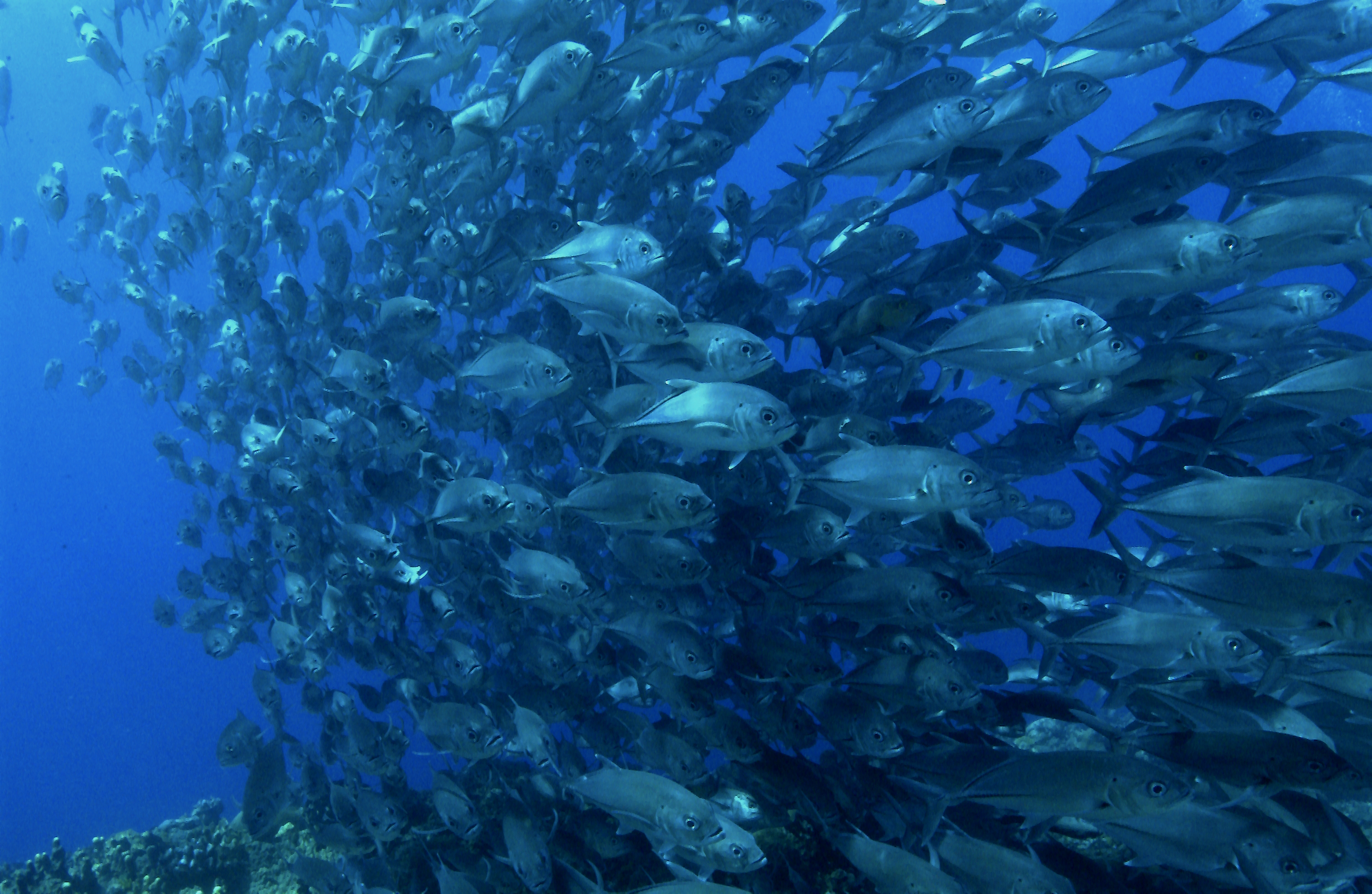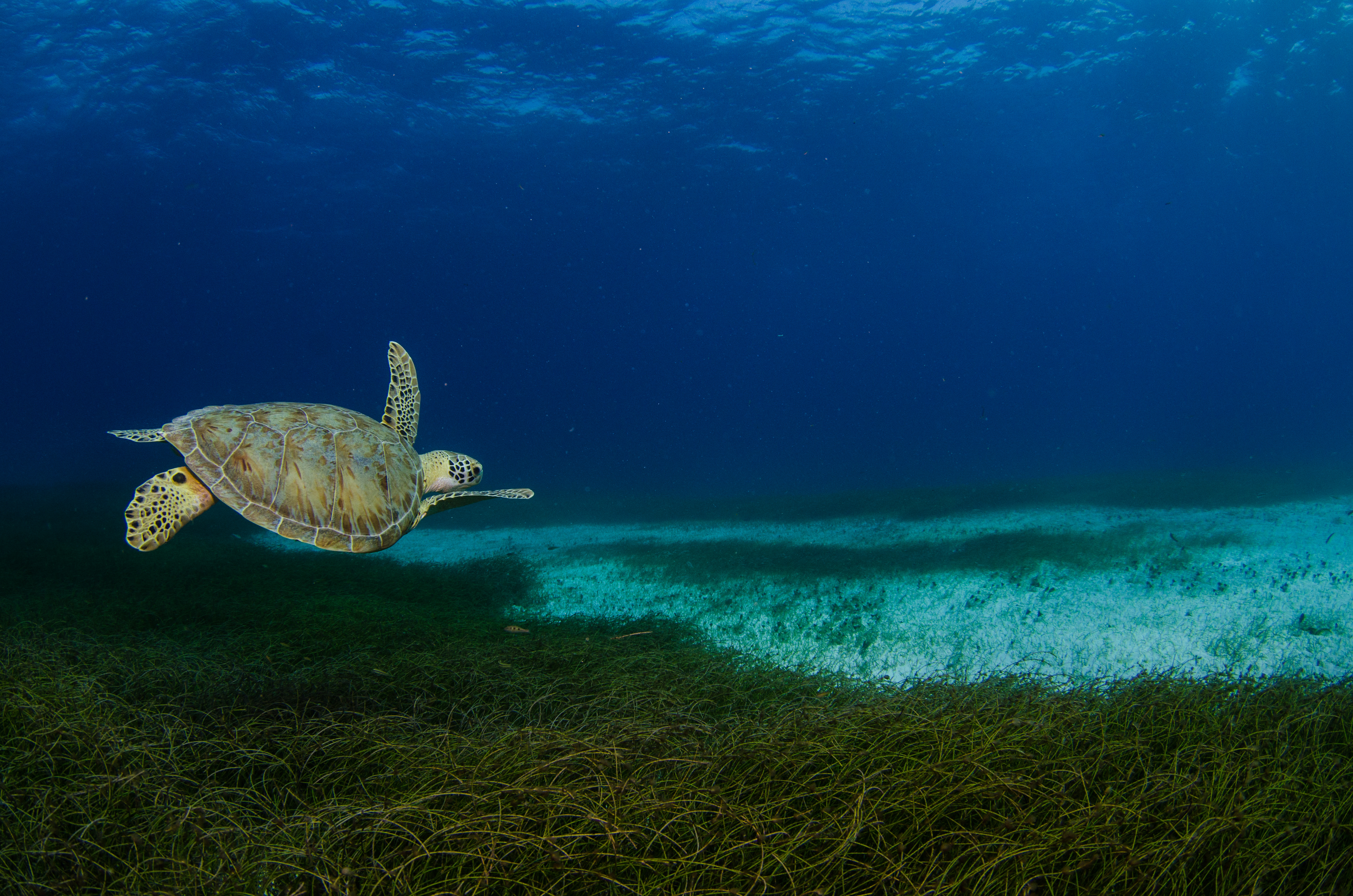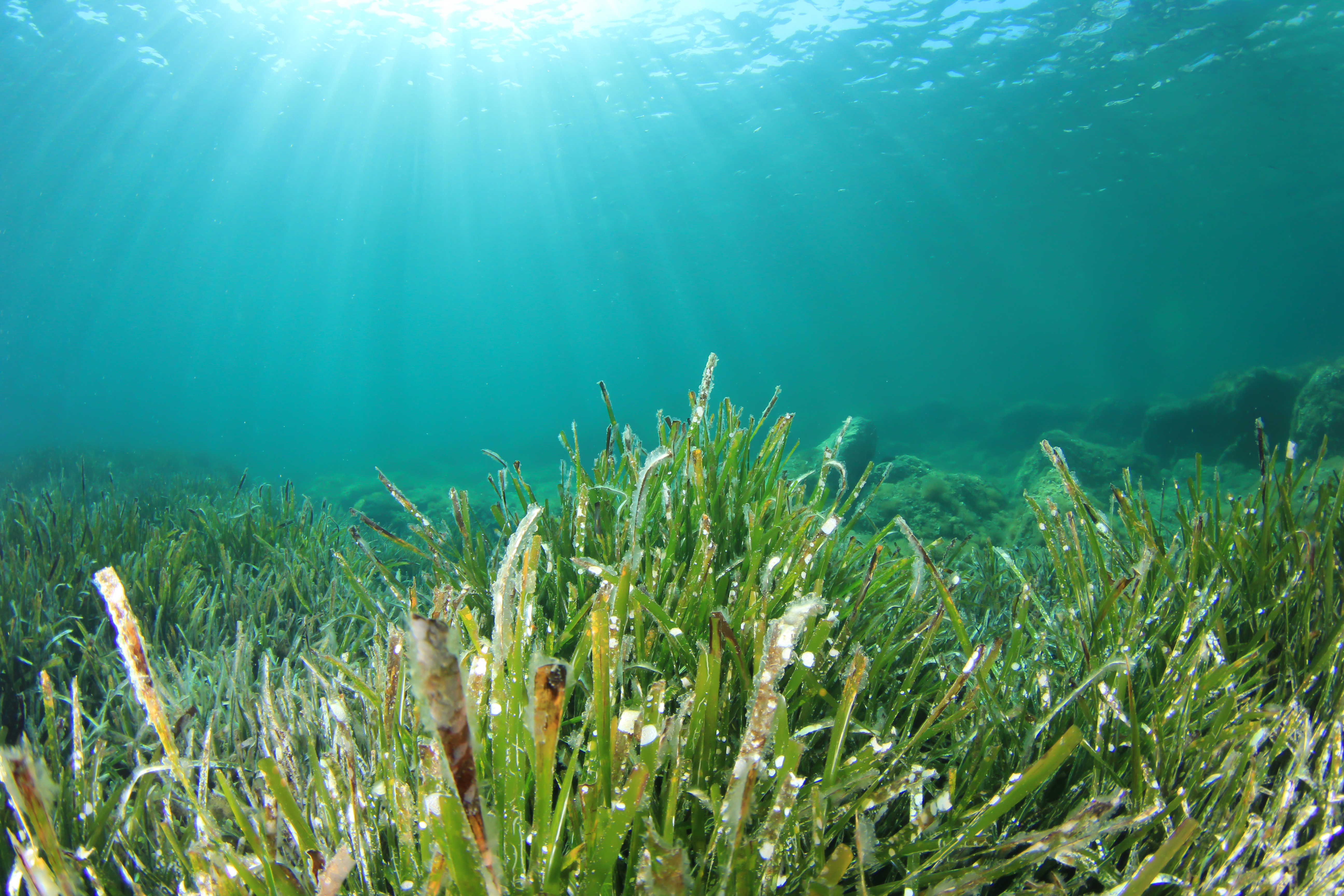The world's oceans are connected to each other, and all humans are connected to the ocean.
![]() We depend on it for food, recreation and many livelihoods. The sea has been a major highway by which humanity spread around the globe in the distant past, and it played a significant role in many cultures. Maritime connections and activities still exert a powerful cultural influence.
We depend on it for food, recreation and many livelihoods. The sea has been a major highway by which humanity spread around the globe in the distant past, and it played a significant role in many cultures. Maritime connections and activities still exert a powerful cultural influence.
With sea-level rise at the end of the last great ice age, the ocean now covers lands once settled and known to ancient people. Indigenous cultures have powerful oral traditions that speak to the great floods that took ancestral homes. Millennia of seafaring have left more than a million shipwrecks on the seabed. Today, the sea is our greatest museum, our largest graveyard, and a powerful shared connection to nearly all human societies, past and present.
 The Ocean Foundation, Split Image of Staghorn Coral, Acropora sp., and uninhabited island, Ailuk Atoll, Marshall Islands, Pacific
The Ocean Foundation, Split Image of Staghorn Coral, Acropora sp., and uninhabited island, Ailuk Atoll, Marshall Islands, Pacific
The public interest in our ocean heritage is evidenced by Conventions, including the 1972 World Heritage Convention (WHC). The initial focus started with terrestrial monuments and sites. The interest evolved and extended seaward to include marine resources and sites.
It also evolved to recognize that living natural resources may also be of cultural significance, such as listing the Dugong by Japan as part of its list of cultural heritage and the inscription of Papahānaumokuākea (the first US Mixed site).
 Credit: Wolcott Henry Photography, The Ocean Foundation
Credit: Wolcott Henry Photography, The Ocean Foundation
In 2016, the IUCN WHC published report 44, titled 'World Heritage in the High Seas: An Idea Whose Time Has Come.' The report identifies three ways to recognize our ocean heritage: 1) interpret the 1972 WHC through incremental practice or an express policy change; 2) Amend the 1972 WHC akin to the 1994 Part XI Implementing Agreement to UNCLOS, and 3) negotiate a protocol to the 1972 WHC. It also provides five examples for consideration: the Costa Rica Thermal Dome, the White Shark Café, the Sargasso Sea, the Lost City Hydrothermal Field, and the Atlantis Bank. While the report does not identify any underwater cultural heritage (UCH) sites, it explores ways for the international community to consider them, including the 2001 Convention.
 Credit: The Ocean Foundation, 2013
Credit: The Ocean Foundation, 2013
Recognizing Our Ocean Heritage in the High Seas and Addressing Threats to Conservation
The International Seabed Authority (ISA) is a good starting place concerning the conservation of UCH from the threat from seabed mining. A powerful statement by scientists on the need for sensitivity in the South Atlantic is a good example. This is the Transatlantic Slave Trade route's "Middle passage," both symbolically important and the resting place of 1.8 million Africans who perished on the passage, along with hundreds of slave trade shipwrecks. The Regional Fishery Management Organizations (RFMOs) would be the forum to address threats to cultural heritage from fishing, particularly bottom trawling, which can destroy fragile shipwrecks.
However, there is no international law or forum to address the threats to cultural heritage from the laying of cables and pipelines, except perhaps the framework provided by the Law of the Sea Convention (LOSC). UNESCO's 2001 Convention specifically addresses the threat to UCH in the High Seas/Area and provides a valuable precedent that should be considered now and in the development of international law in the future. Articles 11 and 12 provide guidance for collaboration among the Member States and ISA for the protection of UCH in the Area.
 Credit: The Ocean Foundation, Jobos Bay, Puerto Rico, 2013
Credit: The Ocean Foundation, Jobos Bay, Puerto Rico, 2013
Consistent with the 1982 LOSC, there is a duty to protect UCH and obligations to ensure that their nationals – or the masters of ships flying their flags - report to it any discovery of UCH or any intention 'to engage in activities directed at underwater cultural heritage located in the Area.' The State Party then reports these activities to both the Director-General of UNESCO and the Secretary-General of the ISA. The Director-General then makes this information available to all States Parties so that they may declare an interest in the UCH in the Area. Interested states then collaborate on how to best protect the UCH and appoint a 'Coordinating State' to implement or organize agreed protection measures in consultation with the ISA, if it accepted the invitation of the Director-General.
It is recognized that any and all Member States have the authority to take 'all practicable measures in conformity with the Convention … to prevent any immediate danger to the [UCH], whether arising from human activities or any other cause including looting' prior to the selection of the Coordinating State and protective measures to be implemented through authorization system. In coordinating consultations, taking measures, conducting preliminary research, and/or issuing authorizations, the Coordinating State shall act for the benefit of humanity as a whole, on behalf of all States Parties.
 Credit: The Ocean Foundation, Jobos Bay, Puerto Rico, 2014
Credit: The Ocean Foundation, Jobos Bay, Puerto Rico, 2014
The criteria for defining the Outstanding Universal Value (OUV) of potential World Heritage sites go beyond biodiversity to include, for example, 'geological and physiographical formations' and sites of historic, archaeological or cultural value. So, the discussions within the UN about a new agreement under UNCLOS would not supersede the need for discussions within the framework of the 1972 WHC.
One thing is clear, the need to integrate UCH into the conservation of the High Seas and the corresponding seabed is key. For indigenous people, the natural world is part of their cultural heritage. There is wisdom and relevance in this.
Looking to the Future
As we look to the future, the focus should include cooperating in protecting our natural and cultural heritage in the High Seas, such as RMS Titanic and the Sargasso Sea. This may consist of cooperation under the WHC, the 2001 UNESCO Convention, the 1982 LOSC, maritime law and otherwise. The science of Sustainable Development includes the science used to survey the seabed, identify and set aside special areas of natural and cultural heritage to be conserved for present and future generations.
Bold initiatives to explore the ocean and map the seabed needs to integrate UCH and its powerful stories. As a species, we are not only self-aware but also self-interested. The evidence of our past and what it tells us can be a gateway into the larger story and the need to better understand, learn from and protect the world's ocean.
This article is part of an online series dedicated to the UN Ocean Decade. One story will be published each week that is related to initiatives, new knowledge, partnerships, or innovative solutions that are relevant to the following seven Ocean Decade outcomes. Access the special digital issue dedicated to the Ocean Decade.
By Dr. James P. Delgado and Ole Varmer





